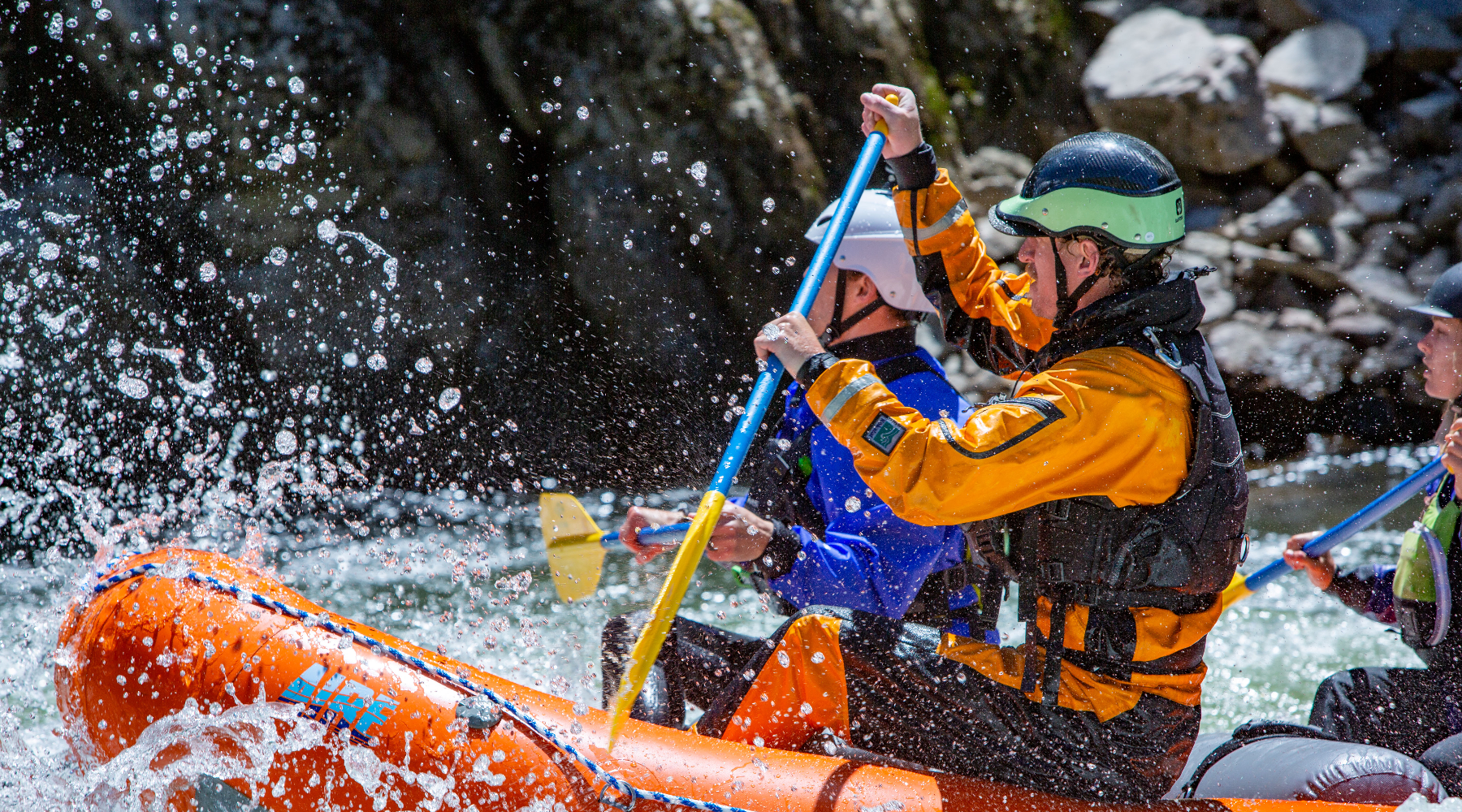Whether you’re rafting Arizona’s Salt River in March, or Idaho’s Middle Fork of the Salmon River in May, spring boating entails ice-cold water, high volume, and typically rusty boating skills.
It’s important to approach spring boating with the right equipment so that you’re being safe while knocking the cobwebs off the oar handles. Before you leave for for first big water trip of the season, it's important to review What Rafters Really Need for Spring Boating.
- Dry Suit
- Layers
- Dry Bag
- Safety Equipment

1. Dry Suit
First, you will need a drysuit. If your drysuit is in need of repair, we suggest you Aquaseal those pinholes, replace your gaskets, and lube up your zippers as soon as you can. You never know when runoff is going to hit...
 |
 |
Drysuits for Men |
Drysuits for Women |
2. Insulating Layers
Snowmelt is runoff, runoff is snowmelt. As such, runoff is COLD. Investing in quality layers is necessary to stay warm on the river.
 |
 |
Insulation for Men |
Insulation for Women |
3. Dry Bag
Next, you will need to look at other dry goods. A solid drybag that can be dedicated to just your layers you need during the day is essential.
While you can get away with an economical solution like the NRS Tuff Sack Drybags, I'm a huge fan of Watershed duffel drybags.
 |
 |
Duffel-style Drybag |
Sack-style Drybag |
Watershed bags have six bomber lashing points that allow you to rig them to your frame side rails or decks (or even suspended in-between cat tubes), ensuring that your most essential clothing options are accessible to captain and passengers, all without unclipping your drybag to get to its contents.
I find that my Chattooga is all I need, most of the time, but if I have a lot of novice passengers on my raft, having a larger bag like the Yukon where I can throw layers that they will inevitably need too is more convenient than the smaller bag.
4. Safety Equipment
Every winter season I take a moment to evaluate my current PFD. I follow the same guidelines as Lee's Ferry river rangers; the PFD cannot have any: tears, broken buckles, or broken zippers.
If your PFD wouldn't pass the Grand Canyon test, then it's time for a new one.
Along with a helmet, a PFD is the most important part of your kit, so it's important that it's new and functions like-new in terms of the flotation, especially when it comes to spring boating.
Most rafters are going to be most comfortable in high-float, low profile Type III PFD, like the Astral Ringo or Layla. If you’re looking to participate in certain swiftwater rescue scenarios, you’re going to need a Type V PFD instead, like the Kokatat Hustle-R or the Astral Greenjacket.

No spring boating trip is complete without some carnage. Someone is gonna swim or flip, it’s just how it goes. It’s easy to forget all the items you need for swiftwater rescue over the winter months, so for a quick refresher, you’ll need to make sure you have:
There are tons of different options for the items above, but generally, make sure you have at least one of each of those things, and more importantly, know how to use them.
Additionally, be sure to sign up for a swiftwater rescue course if you have never taken one. It’ll get you used to using all your gear before you need to use it in a real situation, and you’ll be more confident behind the oars as you drop into your first big Class IV of the season!

